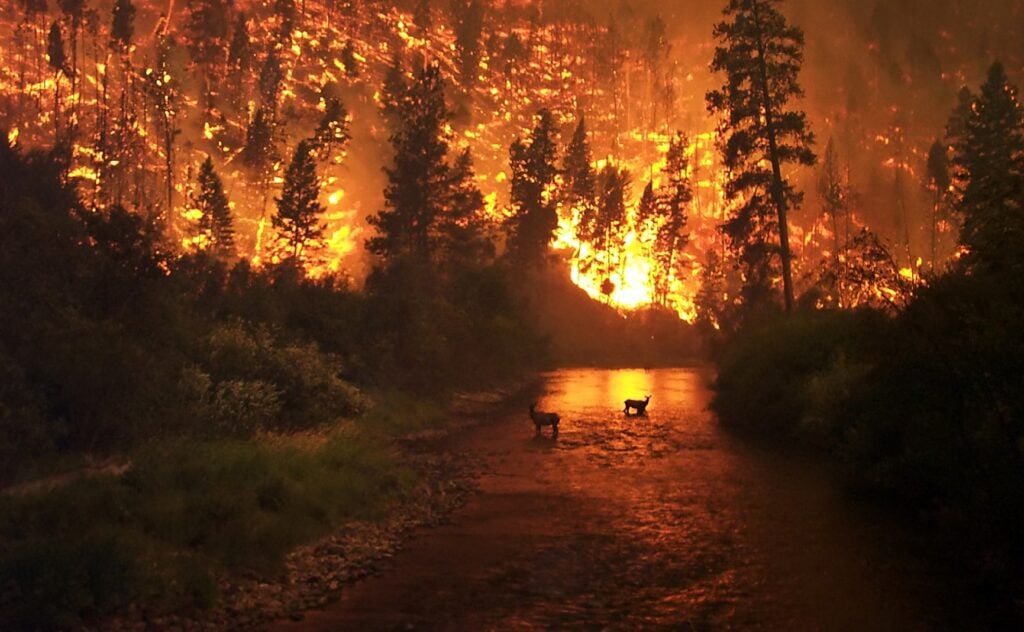Wildfires are uncontrolled fires in densely forested areas, most commonly in forests. As a result, wildfires are more likely to occur in rural areas and significantly affect wild animals. These massive fires can arise from entirely natural causes. Nowadays, however, around 85% of all wildfires are either indirectly or directly caused by humans. But did you know where the deadliest wildfire occurred?
The 1871 Peshtigo Fire was known to be the deadliest wildfire in history. The fire broke out on October 8, 1871. The small town in northeastern Wisconsin, United States had at least 1,500 deaths, accounting for 85 percent of the town’s population.
Do the Majority of Animals Survive Wildfires?
Contrary to popular belief, wildfires do not necessarily kill all animals within the area. Large mammals usually do not perish in a fire because their instincts lead them to flee their habitat before they are placed in danger.
Animals have great instincts and can easily sense danger, so before wildfires get out of hand, most animals have already detected imminent danger and have already fled or taken cover in streams to avoid it.
For example, during the devastating Yosemite wildfire in 1998, only 1% of the native elk population was killed. According to the United States Department of Agriculture and Forest Service, it is a common misconception. In fact, a study was made on the subject.
Despite the general public’s perception that wildland fire is devastating to animals, fires generally kill and injure a relatively small proportion of animal populations.
Wildland Fire in Ecosystems: Effect of Fire on Fauna
However, smaller animals, such as small rodents and insects, suffer the most significant population loss. And even after the fire has been extinguished, wildfires can threaten wildlife. Smoke inhalation can kill many animals. Other populations may also face complications as a result of the destruction of their natural habitat for food and landscape. (Source: Accuweather)
Does Climate Change Cause Wildfires?
A study was conducted and published in Ecosphere on the particular matter. According to the study itself, climate change does play a role in the occurrence of wildfires.
Warmer and drier weather may increase fire activity in biomass-rich areas but have the opposite effect in moisture-stressed biomes ice caps, and deserts.
Climate Change and Disruptions to Global Fire Activity
While the impact of climate change on wildfires varies depending on environment and location, the authors predicted that higher northern latitudes, including the western United States, would increase fires.
As a result, it’s no surprise that wildfires are becoming more common, especially in areas where many people have settled in a short period of time. These wildfires have the potential to be devastating and lethal. (Source: Accuweather)
Can Wildfires Produce Fire Tornadoes?
Fire tornados are more commonly known as fire whirls. They are a rare but destructive aspect of wildfires that can generate the rapid spread of fires on their way to being contained. They are most closely related to dust devils or whirlwinds in terms of meteorology.
Vigorous atmospheric circulation is created when highly unstable, superheated, dry air near the ground breaks through the boundary layer and shoots upward in a swirling motion.
National Oceanic and Atmospheric Administration
These dangerous tornados can vary from 100 to 1,000 feet and contain rotational velocities of up to 90 mph. They generate severe problems for firefighters because their direction and speed are almost incomprehensible to predict when encountered. (Source: Accuweather)
